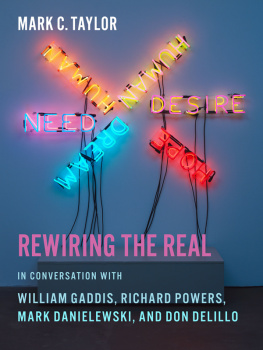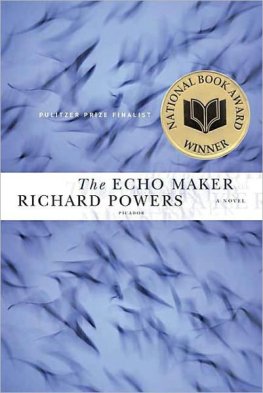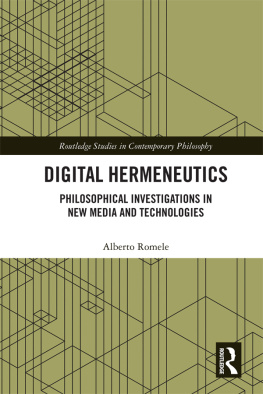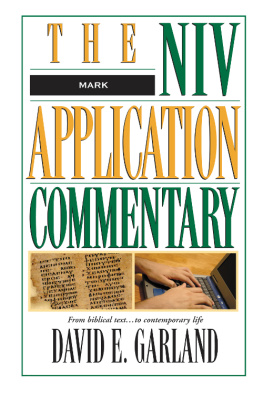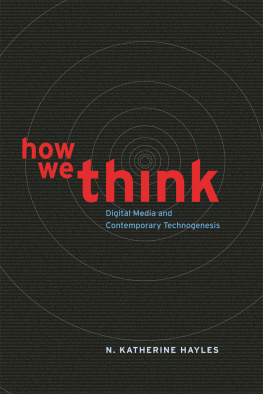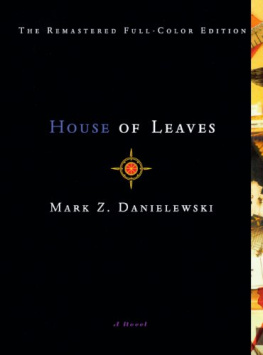REWIRING THE REAL
Religion, Culture, and Public Life
RELIGION, CULTURE, AND PUBLIC LIFE
Series Editors: Alfred Stepan and Mark C. Taylor
The resurgence of religion calls for careful analysis and constructive criticism of new forms of intolerance, as well as new approaches to tolerance, respect, mutual understanding, and accommodation. In order to promote serious scholarship and informed debate, the Institute for Religion, Culture, and Public Life and Columbia University Press are sponsoring a book series devoted to the investigation of the role of religion in society and culture today. This series includes works by scholars in religious studies, political science, history, cultural anthropology, economics, social psychology, and other allied fields whose work sustains multidisciplinary and comparative as well as transnational analyses of historical and contemporary issues. The series focuses on issues related to questions of difference, identity, and practice within local, national, and international contexts. Special attention is paid to the ways in which religious traditions encourage conflict, violence, and intolerance and also support human rights, ecumenical values, and mutual understanding. By mediating alternative methodologies and different religious, social, and cultural traditions, books published in this series will open channels of communication that facilitate critical analysis.
After Pluralism: Reimagining Religious Engagement, edited by Courtney Bender and Pamela E. Klassen
Religion and International Relations Theory, edited by Jack Snyder
Religion in America: A Political History, Denis Lacorne
Democracy, Islam, and Secularism in Turkey, edited by Ahmet T. Kuru and Alfred Stepan
Refiguring the Spiritual: Beuys, Barney, Turrell, Goldsworthy, Mark C. Taylor
Tolerance, Democracy, and Sufis in Senegal, edited by Mamadou Diouf
MARK C. TAYLOR
REWIRING THE REAL
IN CONVERSATION WITH
WILLIAM GADDIS, RICHARD POWERS, MARK DANIELEWSKI, AND DON DELILLO
Columbia
University
Press
New York

Columbia University Press
Publishers Since 1893
New York Chichester, West Sussex
cup.columbia.edu
Copyright 2013 Columbia University Press
All rights reserved
E-ISBN 978-0-231-53164-1
Library of Congress Cataloging-in-Publication Data
Taylor, Mark C., 1945
Rewiring the real : in conversation with William Gaddis, Richard Power, Mark Danielwski, and Don DeLillo / Mark C. Taylor.
p. cm.(Religion, culture, and public life)
Includes bibliographical references and index.
ISBN 978-0-231-16040-7 (cloth : alk. paper)ISBN 978-0-231-53164-1 (e-book)
1. Technology in literature. 2. American literature20th centuryHistory and criticism. 3. American literature21st centuryHistory and criticism. 4. Gaddis, William, 19221998. Recognitions. 5. Powers, Richard, 1957 Plowing the dark. 6. Danielewski, Mark Z. House of leaves. 7. DeLillo, Don. Underworld. 8. Technological innovationsReligious aspects. 9. Theology in literature. 10. Spirituality in literature. I. Title.
PS228. T42T39 2012
810.9356dc23
A Columbia University Press E-book.
CUP would be pleased to hear about your reading experience with this e-book at .
Cover image: 2012 Bruce Nauman / Artists Rights Society (ARS), New York
Digital image The Museum of Modern Art/Licenced by SCALA/Art Resource, NY
Cover design: Lisa Hamm
References to Internet websites (URLs) were accurate at the time of writing. Neither the author nor Columbia University Press is responsible for URLs that may have expired or changed since the manuscript was prepared.
After one has abandoned a belief in god, poetry is that essence which takes its place as lifes redemption.
Wallace Stevens
CONTENTS
REWIRING THE REAL:In Conversation with William Gaddis, Richard Powers, Mark Danielewski, and Don DeLillo complements and completes Refiguring the Spiritual. In the previous book, I examine four artists, one dead and three living (Joseph Beuys, Matthew Barney, James Turrell, and Andy Goldsworthy); in this book, I explore four writers, one dead and three living. I consider these artists and writers to be among the most important cultural figures of our era.
My professional life took me in what I thought was a different direction. Having become interested in religion and philosophy while an undergraduate, I eventually completed an American doctorate in religion and a Danish doctorate in philosophy. For reasons I still find mysterious, I was initially drawn to philosophy and theology by reading the works of Sren Kierkegaard. Kierkegaard borrows lines from Lichtenberg for the epigram to his book Stages on Lifes Way. Such works are mirrors: when an ape looks in, no apostle can look out. When I first read Kierkegaards pseudonymous writings as an undergraduate, it was, indeed, like looking in a mirrorin his writings I saw my own life reflected. Only gradually did I begin to understand how unusual a philosopher Kierkegaard is; indeed, I discovered that many who fashion themselves philosophers refuse to admit him to their club. This made his work even more interesting to me. In the first course I took on Kierkegaard, I learned that he described his most important works as his aesthetic authorship. Ever since that time I have been convinced that no clear line separates art, religion, and theology. Rewiring the Real would not have been possible without the lessons his writings taught me.
Over the years I have come to realize that Kierkegaard is not only the greatest writer Denmark has ever produced but also one of the greatest stylists in the history of philosophy and theology. Kierkegaards preoccupation with aesthetics and, by extension, style was, in large measure, a reaction to Hegels insistence that philosophy is scientificwissenschaftlich. For Hegel, art is, in his infamous words, a thing of the past. He did not, of course, mean that art is no longer produced but rather that philosophical conceptions have replaced religious representations and artistic images as the locus of truth. The task of philosophy in Hegels scientific system is to translate religious and artistic Vorstellungen (representations) into philosophical Begriffe (concepts). Though the meaning of scientific has changed over the years, Kierkegaard and Hegel still pose very different alternatives for philosophical and theological reflection: on the one hand, art, and, on the other, science. I have always been torn between Hegel and Kierkegaard but have never doubted that on this crucial question, Kierkegaard is rightfar from being a thing of the past, art creates the opening through which the future approaches.
As I studied the background and context for Kierkegaards and Hegels thought, my conviction about the importance of art for philosophy and theology deepened. The decisive period for the emergence of modernism and postmodernism was the decade of the 1790s, and the most important place was the small duchy of Jena, in what is now Germany. The nineteenth century effectively begins in 1790, with the publication of Kants Critique of Judgment. In this work, Kant frames most of the philosophical, theological, and artistic issues that continue to be important today. In the course of his analysis of aesthetic judgment, he develops the distinction between fine art and craft, or high art and low art, that became normative for modernists and the target of attack for postmodernists. Artists and writers found new possibilities for creative production in Kants work.
At the same time, important changes were occurring in theology and religion. Throughout the eighteenth century, philosophers had attempted to defend religious belief on rational grounds by developing arguments to prove the existence of God. While the approaches on the continent and in the United Kingdom differed, over the course of the century, deists borrowed empirical methods from the natural sciences to argue for the existence of God. Far from being a vestige of primitive mentality or lingering superstition, religious faith, many argued, can be rationally justified on the basis of empirical evidence. Basing their arguments on the principle of causality, defenders of the cosmological argument argued from the existence of the world the creator God, who is its necessary cause, and proponents of the teleological argument argued from the design and purpose of the world to God as the ground of order. This line of argument finally collapsed when Hume carried empirical epistemology to its logical conclusion. Since all knowledge is based upon sense experience, he argued, causality must be understood as a subjective habit rather than as an objective fact. If belief were to be considered rational, another justification for it would have to be found.
Next page
